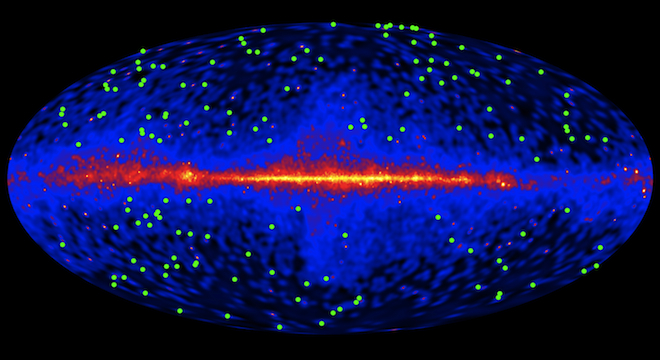The light from every star that’s ever shone in the universe, even those that have long since burned out or otherwise changed form, is still traveling in the form of visible (or optical) and ultraviolet photons.
Collectively, this faint light forms a kind of “cosmic fog,” and is known as the extragalactic background light (EBL). Now scientists have established the most accurate measure yet of all that starlight, using NASA’s Fermi Gamma Ray Space Telescope, the agency announced on Thursday.
The thickness of the fog is 1.4 stars per 100 billion cubic light-years, according to the results of the four-year-long study, published online in the journal Science Express on Thursday.
According to the paper, the average distance between stars is approximately 4,150 light-years, or far further than the 4.3 light years separating Earth and the solar system from our nearest stellar neighbor, the Alpha Centauri system.
Fermi was able to arrive at this mind-boggling measurement by using its Large Area Telescope (LAT), the primary instrument on the unmanned spacecraft, which was launched into orbit around Earth in 2008.
Fermi’s LAT, specifically the instrument’s tungsten plates, detect photons in extremely high-energy gamma rays emitted by blazars — distant galaxies powered by black holes.
As the gamma rays travel from their sources throughout the universe, they pass through the cosmic fog of starlight, sometimes colliding with the starlight photons and becoming electrons and positrons, dimming the gamma ray’s as earthy fog dims and obscures visible light.
Check out a video illustration of the process posted by NASA on Thursday:
“The optical and ultraviolet light from stars continues to travel throughout the universe even after the stars cease to shine, and this creates a fossil radiation field we can explore using gamma rays from distant sources,” said the lead scientist on the project, Marco Ajello, a postdoctoral researcher at the Kavli Institute at Stanford University.
Based on measurements taken of gamma rays emitted by closer blazars, scientists know that the further and more ancient the blazar, the less high-energy gamma rays Fermi will be able to pick up from them. By scanning the entire sky for high-energy gamma rays ove the past four years, Fermi’s LAT was able to produce averages for gamma-ray production for three different periods throughout the history of the universe. And from these three different periods, the total average stellar density was determined.






